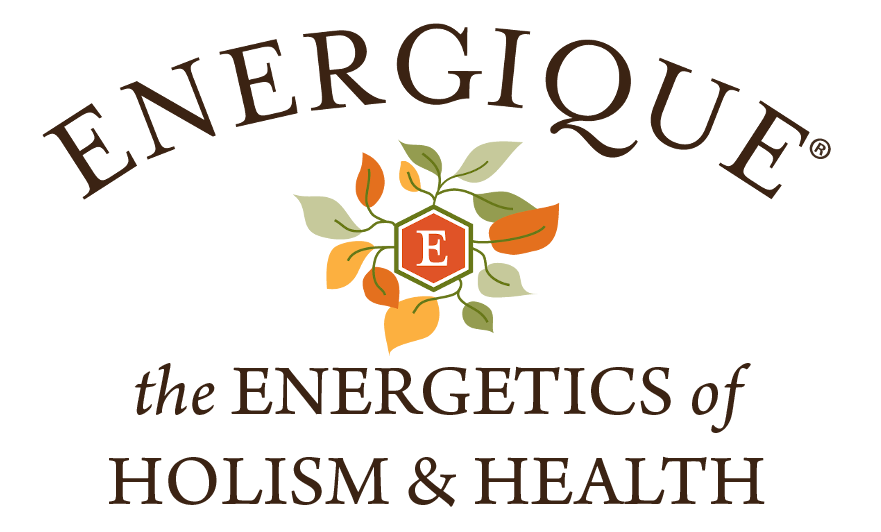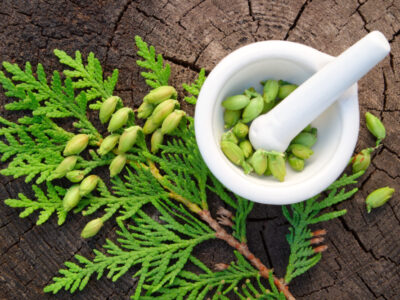The relationship of homeopathy to detoxification arguably extends to its very origins: horrified by the effects of drugging with mercury, opium, and quinine, the most popular medicines of his day, homeopathy's progenitor Samuel Hahnemann pioneered a less-poisonous system of healing. Using the same toxic substances, which in rare cases seemed to have miraculous healing qualities, he employed smaller doses on more specific, holistic indications, and was able to employ these substances medicinally without harm to the patient. In some cases, he was even able to reverse the effects of these crude drugs themselves: the homeopathic materia medica abounds with antidotes to the effects of mercury, a testament to how frequently the toxic metal was given as a drug. While homeopathy has advanced since Hahnemann's day, the toxicity of our modern environment has only become worse. Homeopathy continues to be a useful tool for promoting detoxification, through a variety of new and classical approaches.
Today, the most common homeopathic approach to detox would technically be termed isopathy, i.e. treating a disease with the exact same (as opposed to merely a similar) substance. Although this approach runs counter to the classical theory of homeopathy and was specifically denounced by Samuel Hahnemann, modern scientific evidence suggests that it is actually an effective approach. An in vitro study of Escherichia coli found that Arsenicum Album 30C enhanced the expression of resistance genes, primarily relating to induction of cellular antioxidant mechanisms, and reduced the degree of DNA damage induced by raw Arsenic exposure1. This parallels famous research by the late Nobel Prize-winning virologist Dr. Luc Montagnier, which basically demonstrated that cells react to homeopathic potencies in the same way they react to exposure to the same crude substance, at least at the level of intracellular signaling and gene expression. So although Hahnemann decried isopathy as foolish and even dangerous, there is very good reason to believe that homeopathic dilutions of toxins can increase our resistance to, and possibly enhance the detoxification of, numerous toxic agents.
Yet another homeopathic approach to detoxification is biotherapeutic drainage. Pioneered by French homeopaths in the early 20th century, so-called "drainage" homeopathy entails low potencies of remedies derived primarily from the plant kingdom. Although, again, Hahnemann himself would likely disapprove, the basis of this approach is a phenomenon that he himself described: drugs have opposing primary and secondary actions. Often small doses of a drug will have an effect opposite that of large doses, and it is maintained by the French school of homeopathy that in certain cases, low potencies stimulate the action that high potencies reduce or correct. A prime example that illustrates this would be Chelidonium majus.
It is well-known in herbal medicine that crude doses of Chelidonium act as a cholagogue, stimulating bile production and contraction of the gallbladder to release it. In homeopathy however, the same plant is used in high potency (that is, very small dose) for the opposite effect. The main
homeopathic indications for Chelidonium suggest biliousness and a spasmodic, overactive gallbladder, with its famous keynote of pain radiating the right inferior scapula. The remedy has also been noted to well-suit domineering individuals, consistent with the classical bilious temperament. As a "drainage" remedy prescribed in low potency, i.e. between 1X and 6X, Chelidonium is used to stimulate this organ of elimination. Thus, many drainage remedies come from herbs known for their liver, kidney, or lymphatic affinities, though specific drainage remedies have been described for nearly every tissue and organ system, even for certain emotions in the psychological sphere. A common approach to formulation, then, is to combine isodes of a particular toxin with drainage remedies specific to organs relevant to that substance's detoxification pathways in the body.
While isopathy and biotherapeutic drainage have become the most popular homeopathic approaches to detoxification, in deference to Hahnemann and classicists who defend his notoriously narrow views, there is also an important place for well-chosen single remedies in detoxification. The human body is extremely complex in its innate intelligence and homeostatic mechanisms, and the root cause of toxemia often extends far beyond merely being exposed to a toxin. We are all exposed to numerous, almost constant toxins every day, and there is abundant anecdotal evidence of people abusing with impunity substances that wreak havoc on the health of others. How to explain the people who smoked all their lives and never got lung cancer, or why certain individuals are more sensitive than others to EMF radiation? The dynamics of stress, genetic factors, overall toxic load, and the psycho-neuro-endocrine axis on specific organ function make it difficult to approach detoxification from anything less than a truly a holistic view, and this is where classical homeopathy shines, using a single remedy to match the totality of the symptoms.
Numerous single remedies are used in homeopathy, but one that has earned singular fame as a detoxifier is one of Hahnemann's own contributions, Thuja occidentalis. Thanks to the work of J. Compton Burnett, most homeopaths know Thuja as the main remedy for ailments from vaccination, but its utility here actually refers to a much broader range of action, against blood poisoning generally. Older homeopaths stressed its use for any exposure to animal-derived toxins, and modern homeopaths have even found it useful for problems in patients who have taken conjugated estrogens as hormone replacement, as these are obtained from pregnant horse urine. From its mental and emotional symptom picture, the "essence" of Thuja has been described as a loss of personal identity for having been invaded, poisoned, or contaminated by something "other," with resulting self-disgust and guilt, whether this be an injection of diseased animal matter, sexual contact with a toxic person, genetic modification through viral vectors, or even brainwashing where a person's true beliefs have been replaced through a process of indoctrination.
The experience of contamination in Thuja, by physical or even spiritual toxins is aptly reflected in one of its keynote symptoms, 'delusion his blood is dirty or poisoned.' It is also of interest that the name Thuja is derived from a Greek word meaning "to purify," and it is among the herbs that have traditionally been used as a smudge for ritual purification. It may be the case that feelings of guilt, which dominate Thuja's mental picture, actually impair the body's detoxification mechanisms, through the complex interaction of mind and body. Thuja may prove a useful remedy for cleansing and detoxification on all
levels, but only if its characteristic symptoms are present. The following are considered the primary and most noteworthy indications for homeopathic Thuja:
Emotional
- Sensation that the body (or spirit) is ugly, dirty, poisoned, or unclean, with shame
- Convinced there is something disgusting about oneself that must be concealed
- Excessive guilt as if having committed a crime or sin
- Passive, secretive nature, avoids closeness with others to better hide details about oneself
Mental
- Weak memory, cannot finish sentences (as if always withholding from others)
- Excessive concern about trifles: need to present a carefully cultivated image to the world
- Fear of strangers, morbid introversion, shuns conversation and avoids social contact
- Delusion that the body is fragile or of something alive in the abdomen (these symptoms are rare)
PHYSICAL
- Sharp headache, like a nail driven into the side of the head
- Abdominal pain and bloating, worse from eating onions or garlic (may crave or dislike these foods) -Sudden, painless, gushing diarrhea with liquid yellow stools
- Chronic sinusitis with dry nose and greenish or bloody mucus
- Chronic /frequent cystitis or prostatitis, forked urine stream due to constriction of the urethra -Chronic joint pain, especially worse in cold, damp weather
- Unhealthy skin: warts, moles, acne, boils, age spots, spider veins, excessive growth of hair -Chronic fatigue and rapid weight loss. Can also suffer from obesity, water retention
- Body odor and perspiration that is greasy, sweet smelling, and stains yellow
1 De A, Das D, Dutta S, Chakraborty D, Boujedaini N, Khuda-Bukhsh AR. Potentiated homeopathic drug Arsenicum Album 30C inhibits intracellular reactive oxygen species generation and up-regulates expression of arsenic resistance gene in arsenite-exposed bacteria Escherichia coli. Zhong Xi Yi Jie He Xue Bao. 2012 Feb;10(2):210-27. doi: 10.3736/jcim20120212. PMID: 22313889.


 Practitioners Rely on Energique’s Scientific Process for Natural Health Remedies
Practitioners Rely on Energique’s Scientific Process for Natural Health Remedies